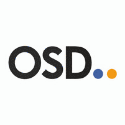Remortgage market had an overwhelmingly healthy Q1 2021, says LMS’ Remortgage Healthcheck Index
LMS has today published its latest Remortgage Healthcheck Index, produced in partnership with the Centre of Economics and Business Research (CEBR), covering Q1 2021.
Key points from report:
- LMS Remortgage Healthcheck Index surges by 9.6 points, standing at its highest overall score since Q2 2015
- Borrowing costs and Borrower Sentiment remain neutral, but both are less than 1 point off a ‘positive’ score
- Remortgage Approvals and Homeowner Equity continue to rise, both fuelled by rising house prices across England & Wales
The LMS Remortgage Healthcheck Index shows the overall health of the remortgage market and tracks changes in four key indicators: volume and value of remortgage approvals, remortgage borrowing costs, homeowner equity value and consumer sentiment. The index also shows how remortgage activity is performing alongside wider market conditions and how the key indicators are affecting consumer spending and habits.
Each indicator is scored between 0 and 100, with scores between 40 and 60 considered neutral, a score below 40 considered negative, and score over 60 seen as positive for the industry. The overall healthcheck score is the weighted average of each indicator score.
Q4 2020 Overall Healthcheck: 64.4 = positive
The LMS Remortgage Index rose by 9.6 points to stand at 64.4 in Q1 2021, marking the highest reading since Q2 2015 and, bar the temporary bounceback in Q3 2020, the strongest quarterly gain in the overall index recorded since Q2 2013.
All four sub-scores of the index recorded quarterly increases, though the main drivers behind the uptick were the Remortgage Approvals and Borrowing Costs indicators. This was driven by consumer appetite to lock in low mortgage rates and a fall in interest rate spreads between lenders and borrowers, indicating that banks are competing more actively for new borrowers by lowering their rates.
Remortgage Approvals: 69.4 = positive
Rising average approval values push remortgage approvals indicator higher
The Remortgage Approvals indicator surged by 12.9 points to stand at 69.4. This is close to the all-time high recorded in Q3 2020 (since we started tracking) as the economy opened up again following the first national lockdown.
This strong performance comes despite continuous low approval numbers from lenders, which seem to have found a new plateau at around 100,000 per quarter. The rolling three-month average has increased only marginally over the first quarter, rising to 102,002 up from 101,857 in Q4 2020. This is compared to a 3-month rolling average of 151,736, from December 2019 to February 2020, the last recorded “pre pandemic” figure.
The increase in the indicator is almost solely driven by higher average approval values. This comes as property values continue to rise across England and Wales, and suggests that homeowners of more expensive properties are also increasingly taking the opportunity to remortgage as interest rates remain low.
Borrowing Costs: 59.6 – neutral
Sharp fall in the spreads between the cost of borrowing to the lender and the cost passed on to the borrower leads to a just below positive score for the Borrowing Costs indicator
The Borrowing Costs indicator improved by 18.4 points in Q1 to 59.6, the highest value since Q1 2020.
Mortgage rates for two- and five-year fixed rate mortgages decreased over the first quarter, while standard variable rate mortgages remained largely stable. Ten-year fixed rates rose slightly between Q4 2020 and Q1 2021. Both the lower mortgage rates and the narrowing spreads are helping to reduce borrowing costs for consumers.
Homeowner Equity: 74.7 = positive
UK house price growth remains strong following the Chancellor’s stamp duty holiday extension
The Homeowner Equity indicator recorded a marginal increase in the first quarter of the year, rising by 0.8 points to stand at 74.7. Indicator growth came as house prices remained on an upward trend during the first three months of the year, although price growth slowed slightly towards the end of the quarter.
The Chancellor, Rishi Sunak, announced in the March Budget that the stamp duty holiday would be extended in its current form to the end of June, followed by a staggered return to normal rates in the months until October, which took pressure off the market and stabilised prices.
Borrower Sentiment: 59.1 = neutral
Consumer confidence rises to all-time high as speedy vaccine rollout promises return to normality
The Borrower Sentiment indicator recorded a second consecutive increase in Q1 2021, rising by 1.8 points to 59.1, a new all-time high.
The increase was driven by better scores for consumer confidence and borrower sentiment, likely caused the speedy vaccine rollout and the government’s roadmap to loosen social distancing restrictions fuelled hopes of the pandemic coming to an end in the coming months.
We expect consumer confidence to remain buoyant in the coming weeks translating into higher spending and increased economic activity.
Nick Chadbourne, CEO at LMS, comments:
“Q1’s remortgage market was particularly strong, showing growth in all indicators and with the overall score hitting its highest value since Q2 2015, one year before the Brexit referendum which caused widespread uncertainty in the housing market.
“The strong Borrowing Costs indicator score is especially promising. Borrowing Costs measure the gap between lenders’ own funding costs and the interest rates they charge to borrowers, and the rising score means lenders are passing their reduced costs to borrowers, signalling a positive outlook for the future as lenders fight for market share and borrowers feel the benefits.
“Concurrently, rising house prices across England and Wales continue to drive positive scores in Homeowner Equity and Remortgage Approvals. Rising house prices put homeowners in stronger equity positions and while approval numbers have plateaued since the beginning of the lockdown in Q2 2020, lenders are continuing to test the waters with larger loans, pushing the Remortgage Approvals indicator up.
“Looking ahead to the rest of Q2 2021, we will see the continued impact of government support schemes such as the Stamp Duty Land Tax holiday extension and government-backed 95% LTV mortgages. The extension of these schemes will continue to fuel house price growth across the majority of England and Wales, supporting Remortgage Approvals, driving up the Homeowner Equity score and contributing to healthy Borrower Sentiment, pointing to a continued healthy remo market for the remainder of H1.”
Kindly shared by LMS
Main photo courtesy of Pixabay


















